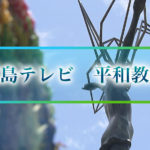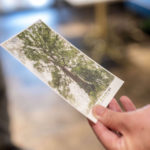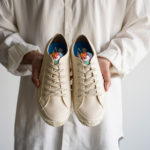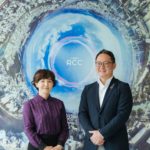Recording, Remembering, Sharing, and Spreading the Word Hiroshima Fieldwork
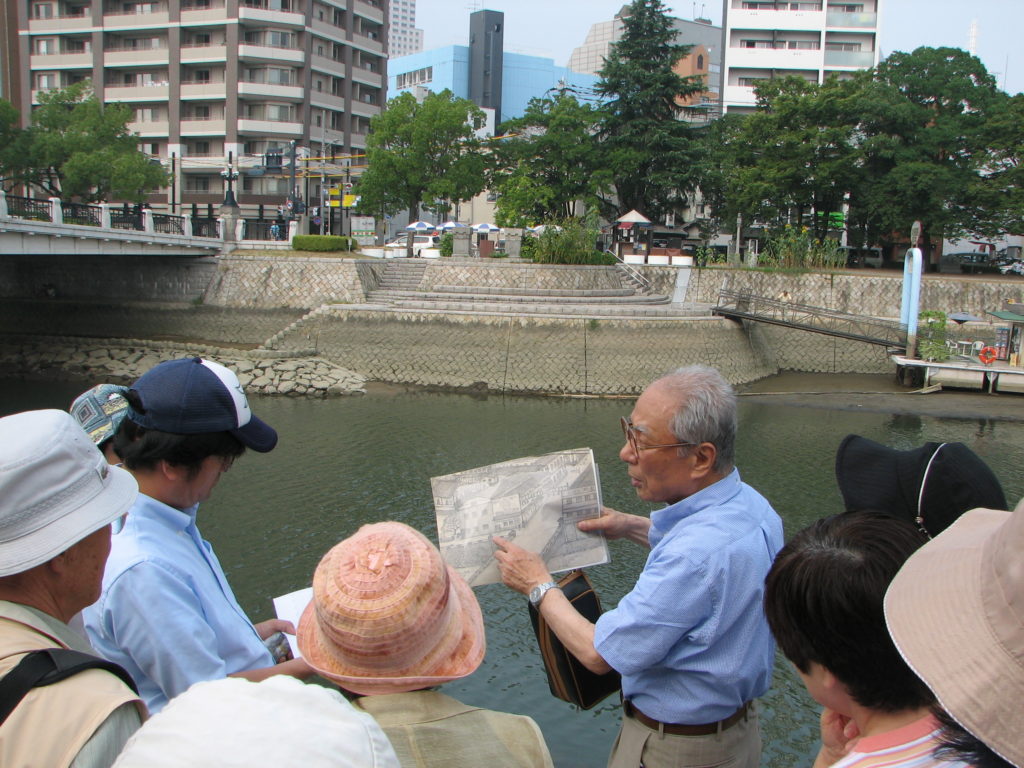
The Hiroshima Fieldwork Executive Committee is conducting fieldwork to trace the footsteps of those who used to live in the Peace Memorial Park area. We spoke with committee representative NAKAGAWA Motoo and joint representative Luli van der Does about their specific activities and mindset.
Hiroshima Fieldwork was started in 1994 in the hope that more people would listen to the testimony of SAIKI Toshiko, who has been involved in the cleanup of the Atomic Bomb Memorial Burial Mound for about 40 years, and who has also helped to find and return the remains of the victims to their families. NAKAGAWA Motoo, the executive committee representative, has been learning about peace since his student days, and while currently working as a high school teacher, he has been actively sharing the historical evidence he has obtained and the thoughts of A-bomb survivors. He and others are seeking ways to make use of the events of the past for the future by regarding them as their own personal experiences.
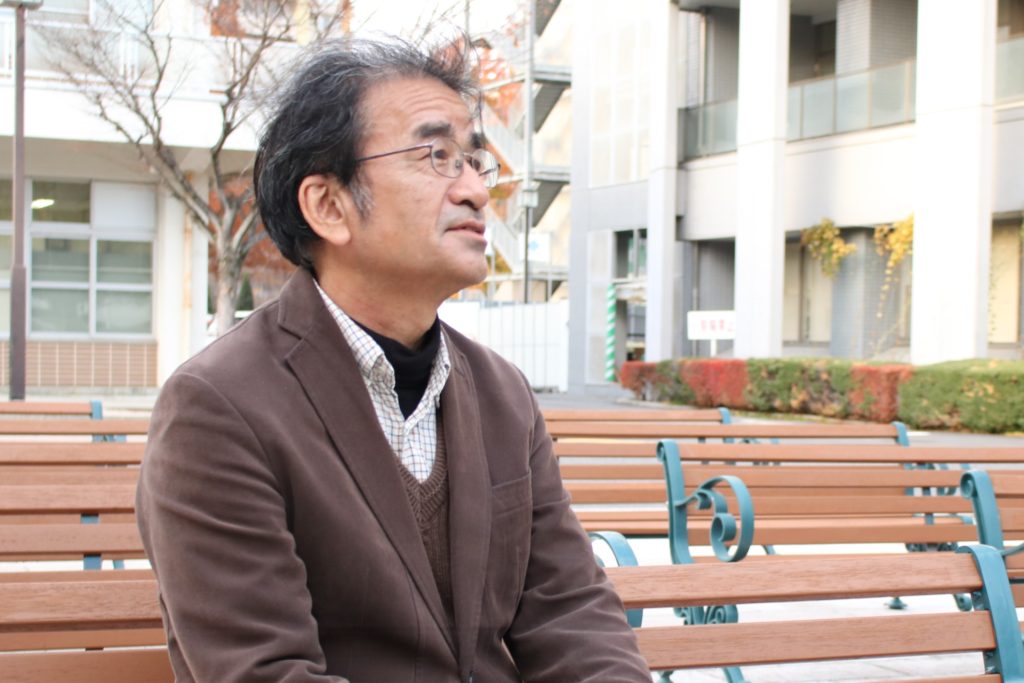
NAKAGAWA Motoo, representative of the Hiroshima Fieldwork Executive Committee
Initially, the itinerary began at the Genbaku Dome, continued through Sairenji and Saikoji Temples, Ground Zero, the Motoyasu River, and after a visit to the basement of the Hiroshima Peace Park Rest House, ended with listening to SAIKI Toshiko’s testimony in front of the Atomic Bomb Memorial Burial Mound, where participants joined hands in prayer for the remains of those who were laid to rest underground. It was not a tour that went from monument to monument, because the goal was for people to experience the atomic bombing as realistically as possible, for example through the Jizo statues, crumbled where the atomic bomb hit them directly, but smooth on the parts that were in the shadows, and the gravestones of children who were only two years old at the time of the bombing.
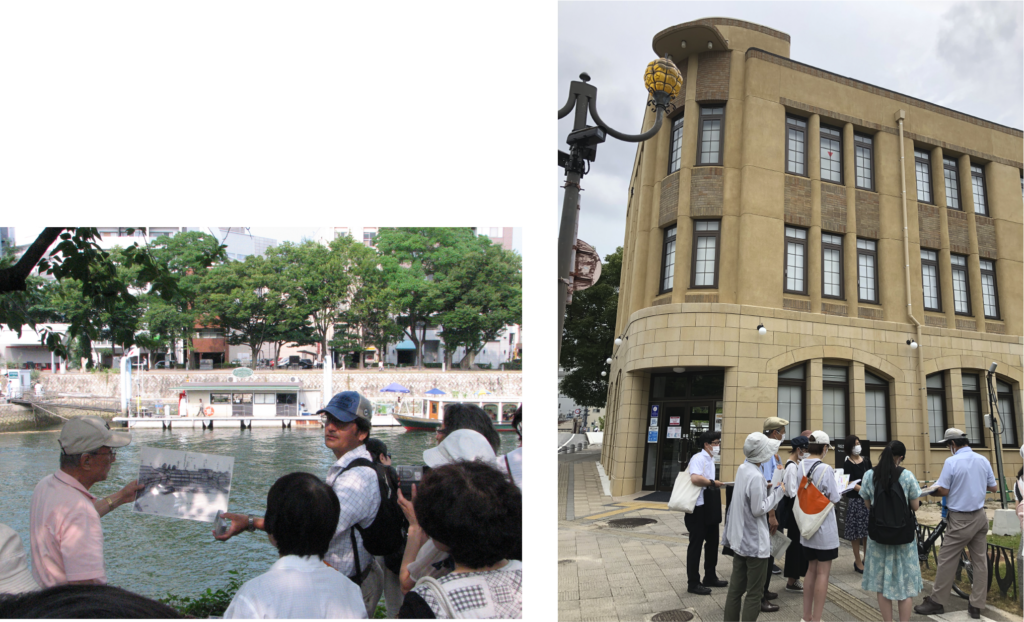
Fieldwork (left 2010, right 2021)
After SAIKI Toshiko fell ill in 1998, the association began to look for a new approach to fieldwork and came up with the concept of “another kind of fieldwork,” which enquired about what kind of city and way of life existed beneath the ground we now walk on. Another fieldwork tour began in 2003, with the participation of people who used to live in the former Sarugaku-cho and Shimamoto-cho areas who offer their testimony about life back then. Participants range from students to working adults to former residents of the area. In 2013, KATABUCHI Sunao, director of the film In This Corner of the World, attended the event in order to learn more about the town’s history. The Hiroshima Fieldwork Executive Committee assisted in the recreation of the town depicted in the anime.

Photographs showing the town before the atomic bombing gathered during the fieldwork.
Around this time, the association also began to self-publish books of testimonies from their fieldwork under the theme of “Recording, Remembering, Sharing, and Spreading the Word”. 11 volumes have been published so far, beginning with
Shōogen Genbaku Nōkotsu Anchisho to Saiki san (The Atomic Bomb Memorial Mound and Testimonies of Toshiko ) and continuing with the most recent book, Genbaku Nōkotsu Anchisho wo Mamoritsuzukete: SAIKI Toshiko san no Shōgen (Keep Protecting the Atomic Bomb Memorial Mound: Testimonies of SAIKI Toshiko”), published in 2022.
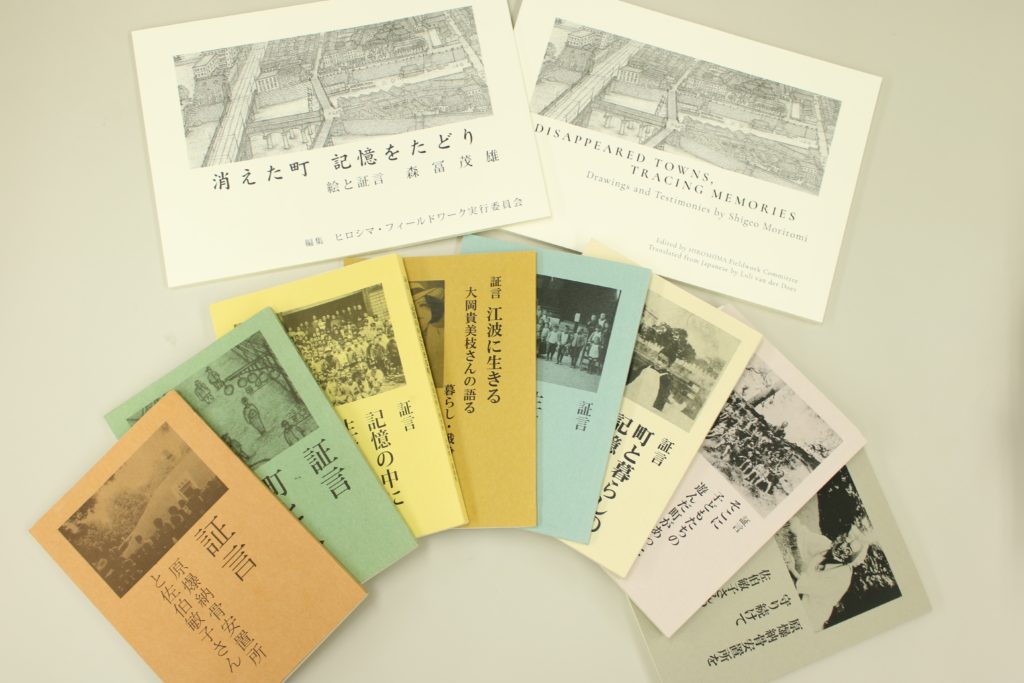
Some of the booklets the committee has self-published so far
Many people who buy these books have a connection to the town, such as relatives who once lived there. In many cases, they were able to meet new witnesses and learn more about the situation at the time. The arrival of a picture story or a monkey show in town, children engrossed in catching shrimp while playing in the river… Such small, everyday events have formed a vivid picture of those days in Mr. Nakagawa’s mind.
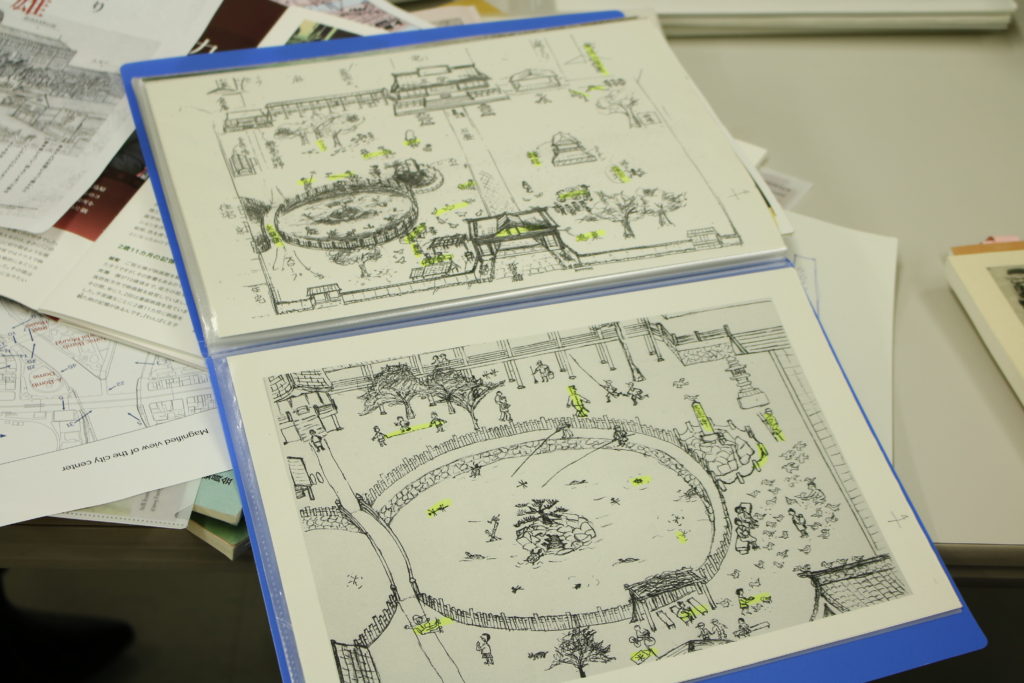
Memories of the town as depicted by the residents of that time.
Among the volumes published in the series, some place a special emphasis on pictures. One of them is titled Kieta Machi Kioku wo Tadori E to Shōgen Moritomi Shigeo (“Disappeared Towns, Tracing Memories: Drawings and Testimonies by Shigeo Moritomi”). Moritomi’s meticulous drawings, detailed to the point of dating, bring the city of those days into sharp focus.
The desire to share these illustrations with people outside of Japan led to a chance meeting with Luli van der Does, Associate Professor at The Center for Peace, Hiroshima University. She agreed without hesitation when asked to assist with the translation and has been serving as the association’s joint representative since 2019.
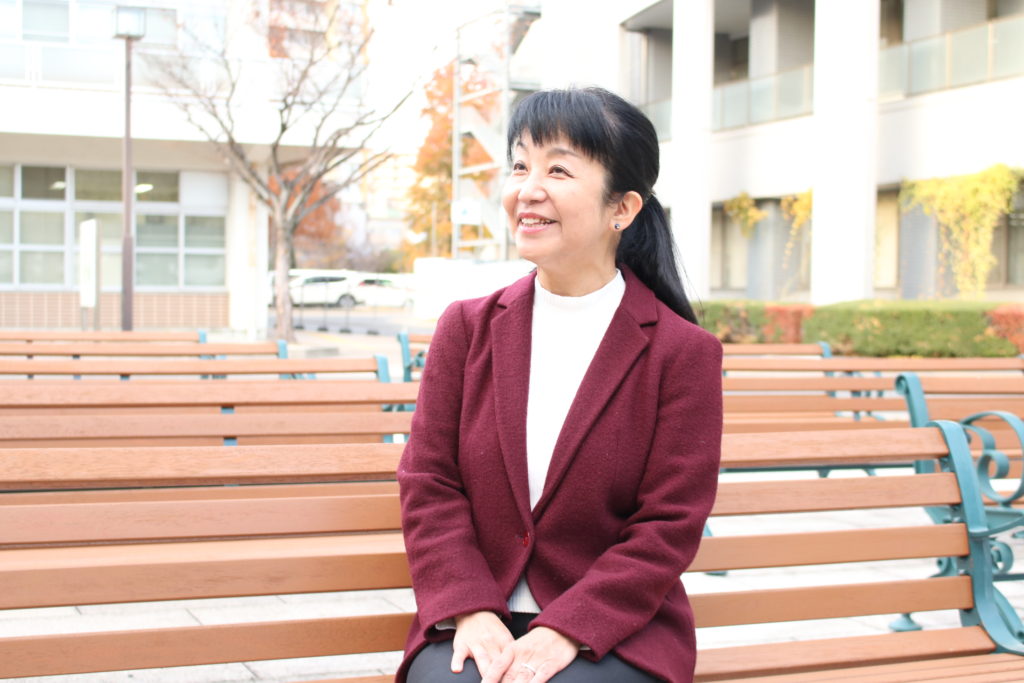
Joint representative Luli van der Does
Luli, who has been researching peace and world conflicts in Memory Studies, says her encounter with Hiroshima Fieldwork Committee brought her research and practices together. Through learning about various survivors’ life histories and passing on their memories to the next generation, rather than viewing the war as a distant history, we can become able to make constructive judgements about how countries and people should interact with one another to build peace, with the sense of mutual responsibility for the future, rather than making superficial judgements about who was right or wrong in the past incidents.
“Memory is fluid”, she says, “and it can easily fade. It can be erroneous and vulnerable to change, but that is natural. That is why memory has the power to change our future. I want to create a space where we can acknowledge our vulnerability and strength through memory exchange. Mr Nakagawa’s role is to conduct activities that delve deeper into the city of Hiroshima, while mine is to disseminate this knowledge and experiences domestically and internationally.”
In addition to fieldwork, the Committee focuses on peace tourism: they organize tours on foot or by using the Hiroshima City Bicycle Rental “Peace-kuru” and other services in the hope that more people will visit Hiroshima in person, experience and inherit the city’s legacy.
Luri, who has been conducting research on peace, world conflict, and memory studies, says that her encounter with Hiroshima Fieldwork was the point at which she felt all of her research came together.
She believes that by hearing many people’s stories and passing on their memories to the next generation, rather than viewing the war as a distant historical fact, we can make constructive judgments about how countries and people should interact with one another and how to solve various problems, with the sense of those who were involved, rather than simply judging who was right or wrong at the time.
”Memory is fluid,” she says, “and it can easily fade. It can be erroneous, it can keep changing, and that’s fine. That is why I believe that memory has the power to change the future. I want to create a space where we can acknowledge each other’s vulnerability. Professor Nakagawa’s role is to conduct activities that delve deeper into the city of Hiroshima, while mine is to divulge this knowledge both domestically and internationally.”
In addition to fieldwork, the association also focuses on tours using the Hiroshima City Bicycle Rental “Peace-Kuru” service and on other peace tourism activities, in the hope that people will visit Hiroshima in person to experience and inherit the city’s legacy.
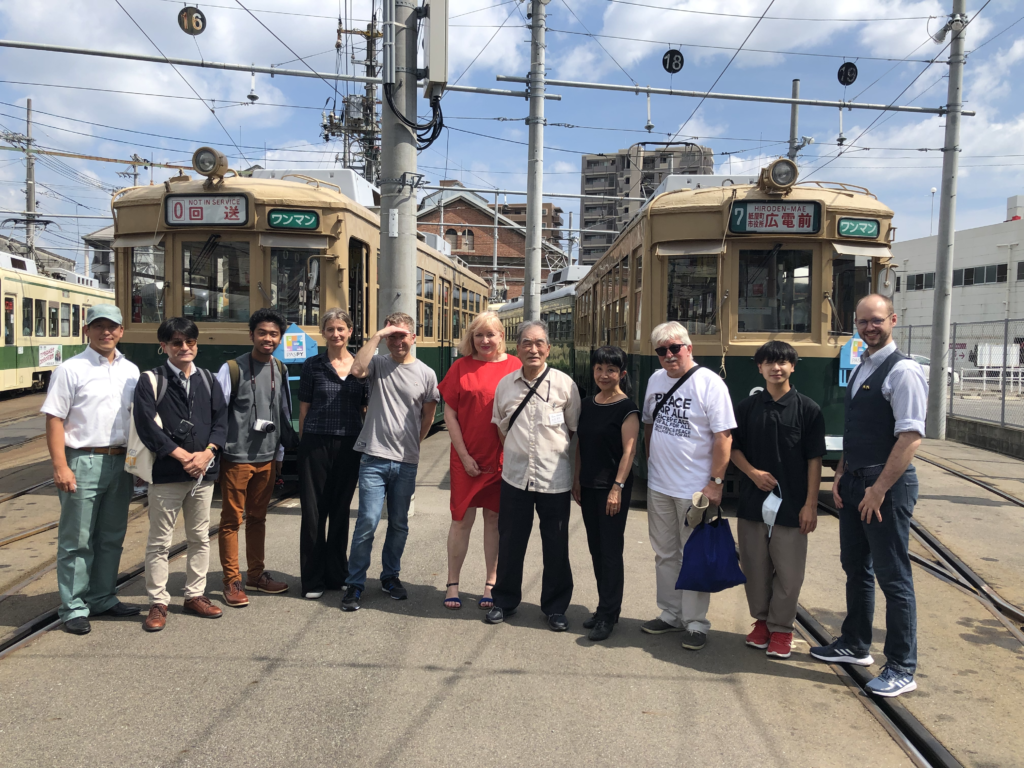
Peace tourism on the A-bombed train with the international joint research team
“Today, there are numerous ways to enjoy Hiroshima. For example, if you find yourself near Peace Park, you can go on a boat ride or do SUP. While you’re there, you may notice a certain pedestrian walkway, and think, “Oh, I remember seeing a walkway in Moritomi’s book, and children used to play there,” and your memories and experiences will be linked. The reality of the atomic bombing does not end with the events of the day of the explosion but continues to this day. Hiroshima’s efforts for peace up to the present day have not been in vain. We believe it is our responsibility to record, remember, and share this knowledge. We must listen now and pass it on to future generations.” Luli and Nakagawa stated.
If we can claim what our forefathers left us, we may be able to pass on to the next generation a “living Hiroshima” and the energy to pave the way for a peaceful future.

DATA
Hiroshima Fieldwork Executive Committee
Contact: NAKAGAWA (090-2299-9107)
Luli van der DOES (lulidoes@hiroshima-u.ac.jp)
Twitter: https://twitter.com/hfw_motoo
Tags associated with this article



